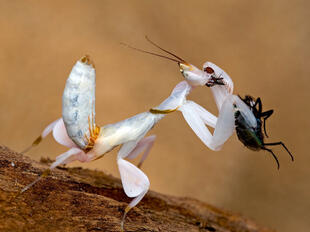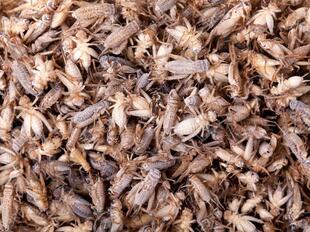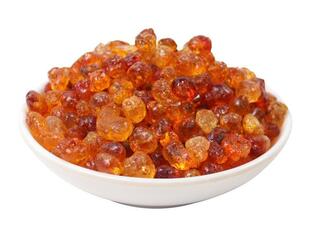
Goitered gazelle(Gazella subgutturosa)
Phylum —chordata
Class — mammalia
Order — artiodactyla
Family — bovidae
Genus – gazella
Appearance
Goitered gazelles are generally sandy in color, however, the fur color may vary depending on location. They can be white to brown with shades of grey, red, and yellow. Their face is usually white and fades with age. These gazelles have a short, dark brown or black in color tail. During the winter their coat becomes thicker and lighter in color.
Goitered gazelles get their name from the goiter-like enlargement on the throat of the males during the mating season. Males in this species are larger than females and have larger goiters. In general, females are hornless. Weight 17,5 – 43kg, length 940 – 1260 мм.
Habitat
Goitered gazelles are found in Georgia, Azerbaijan, Iran, possibly parts of Iraq, Pakistan, Afghanistan, Tajikistan, Kyrgyzstan, Uzbekistan, India, Turkmenistan, Kazakhstan and in northwest China and Mongolia.
Behavior
Goitered gazelles are social animals. During summertime, they live in small family groups consisting of 2-9 individuals. However, in winter, they gather in larger herds and migrate to valleys where the cold and winds are not so strong. During this time herds cover up to 10-30 km per day.
Goitered gazelles are diurnal creatures. In summer they prefer to feed in the early morning and in the afternoon. In order to cool themselves during the heat of the day, they dig and lay in shallow pits. During cold periods of time, they may forage continuously and rest briefly at midday. In areas where these gazelles can be hunted, they can become nocturnal.
When Goitered gazelles feel threatened, they make a series of stiff-legged jumps. When they run at high speeds, they gallop holding their necks outstretched and tails upright. In order to communicate with each other, Goitered gazelles use deep grunts, hissing, moos and wheezing. Females make hoarse, low-pitched sounds to call their young and calves to respond to them with a low-pitched “moo”.
Diet
Goitered gazelles are herbivores. They feed on various grasses and herbs and can stay long periods without water.
Reproduction
Goitered gazelles are polygynous, which means that one male mates with more than one female during the breeding season. When the mating season comes, females and young gather into herds, while adult males remain solitary. Goitered gazelles breed in November through January. During this time males become very territorial; they guard and mark their territories with dung, urine, and with secretions from preorbital glands. They also may scrape the ground with their horns or forelegs. Males attract females with the help of courtship rituals which include neck stretching, nose-up posturing, and foreleg kicking. They may also release pheromones.
Pregnant females leave the herd before giving birth. The gestation period lasts around 5 or 6 months. Females usually give birth to twins; young and old females generally have a single calf. Newborns are fully developed and can stand soon after birth. For the first 2 weeks, calves lie hidden in a covered with vegetation place while their mother forages nearby. They are nursed within 3-6 months but are able to forage and drink water when they are 4-6 weeks old. Calves are weaned at 6 months of age and become completely independent from their mother.
Females become reproductively mature at 5-12 months of age, while males reach reproductive maturity when they are 10-12 months old.
The lifespan of Goitered gazelles in the wild is 7 years, and in captivity they can live up to 10 years.
In captivity
In captivity, Goitered gazelles are well tamed and breed.
The little gazelles are kept in small groups of 5-7 individuals in small houses made of wood or reeds, the area of paddocks is 2x2 m. In the first days after the capture, people take care of themfrom early morning to late evening. They are busy with talking to them, stroking them, holding them in their hands, calming them and teaching them to drink warmed milk from a bottle with a nipple. Quite often, hearing the radio in the houses, the little gazelles get used to unusual sounds. It is very important to avoid sudden movements when entering houses or paddocks, and be sure to speak softly to the animals. If in the first days the baby begins to worry, it is carefully lifted up so that the legs are straightened, and then return it back. Sometimes you have to lift the baby several times to calm it down and sometimes also carry it for a long time. After the feeding its faceshould be wiped with a cloth to avoid flies and do not let its hair shed from the place soaked in milk.
The first feeding is very responsible, it is always carried out by two people. The little gazelle is carefully placed on its feet, and the assistant begins to patthe white hair around the tail with his hand or fingers twice per second. The other man with hisleft hand picks up the little gazelle`s face in the palm so that his eyes were covered by the hand. Slightly pressing the tips of the lips, the right hand gently places the nipple in the mouth. After 3-4 days of adaptation, most of the little gazelles willingly run to theowner and actively suck milk.
For feeding, only fresh goat's milk is used, then a mixture of goat and cow's milk and after about two weeks gazelles are completely feed with cow's milk. In cases where milk is obtained from unknown animals, it must be pre-boiled. The little gazelles are very reluctant to drink cold milk, so it must be heated to 35-38 degrees just before feeding.
Artificial feeding of gazelles with milk lasts 3-4 months, until the middle-end of August. About the same amount of time a female feeds itschildren in nature. Up to 3-4 weeks of age, the little gazelles are fed three times a day, then transferred to two-time feeding.
The first feeding is 50-100 g, and on the first day the baby drinks up to 300 g of milk. By the age of one month, the daily rate of milk forone animal is gradually brought to 1 liter per day. At 5 days of age, the little gazellesate given alfalfa, previously dried in the shade for 10-12 hours (freshly mown causes digestive disorders). By 20-25 days of age, all little gazelles begin actively eat green food together with milk. Starting from 2-3 weeks of age, mixed feed is placed in bowls, approximately 50 g per animal. At about this age, the period of primary adaptation of little gazelles to humans ends, and they begin to unite in a common group, which is released for the whole day in a large enclosure up to 30x30 m in size. Taking gazelles into the houses for the night takes place during the evening feeding — the little ones rush to the person with a bottle of milk, without showing any fear to him.
After stopping milk feeding, the little gazelles are fedwith alfalfa and mixed feed (approximately 2 kg of alfalfa and up to 250 g of mixed feed in three-month age). In large enclosures a basin of waterfor drinking should be put.
 Russian
Russian
 English
English
























